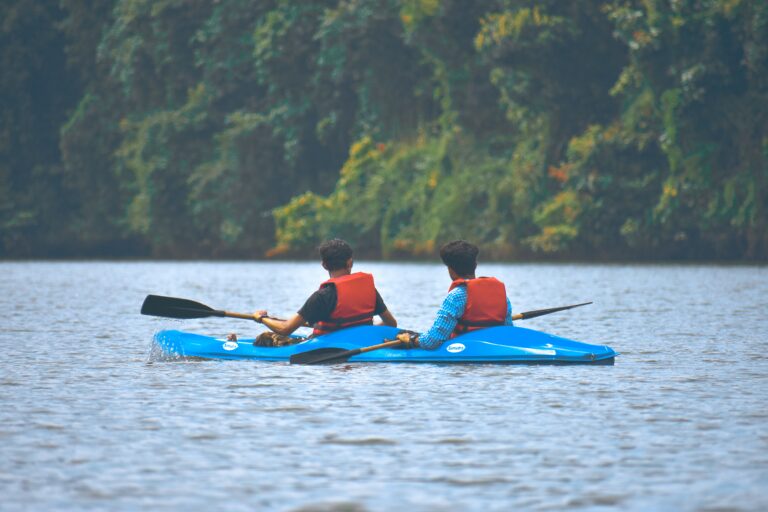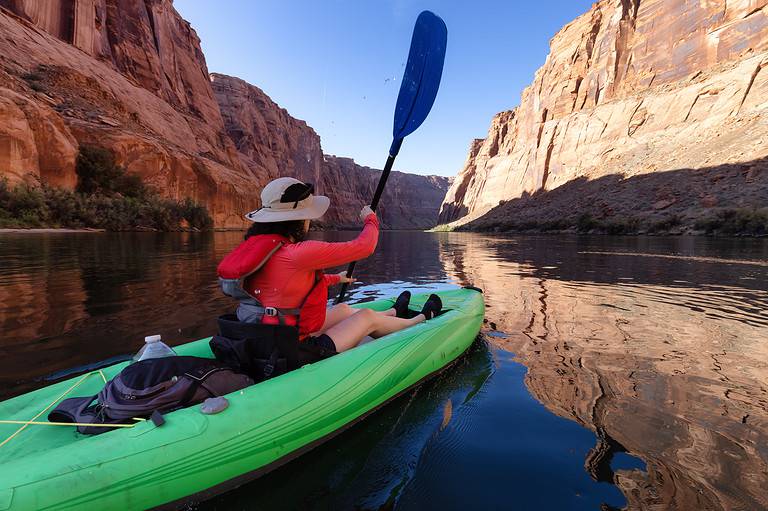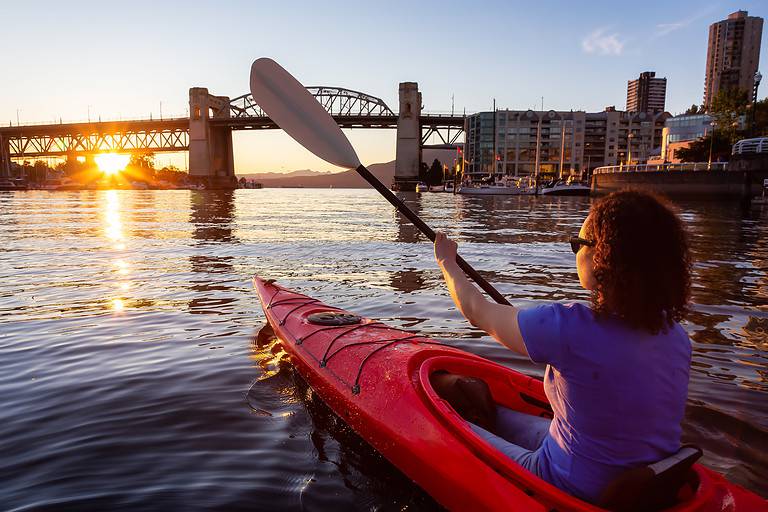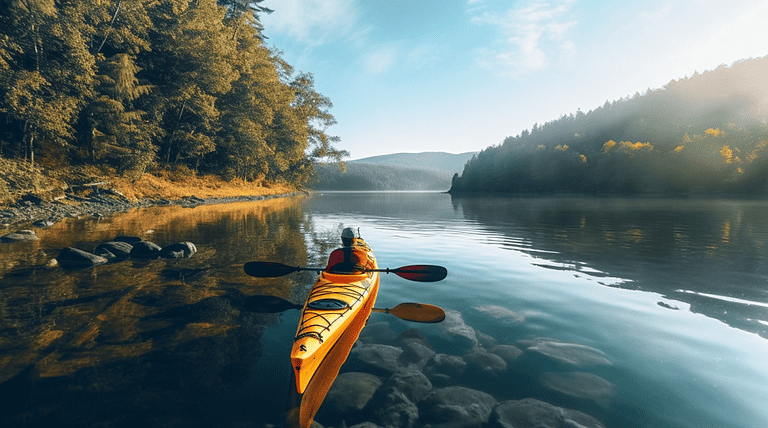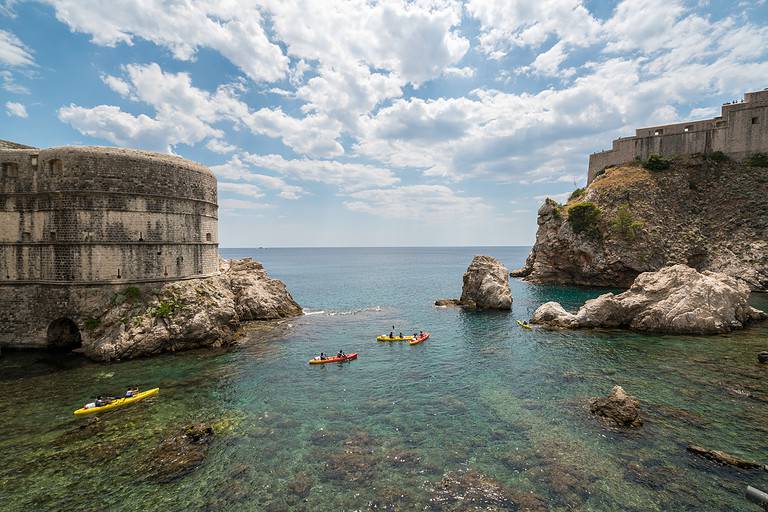A Guide To Choosing Your First Kayak: Beginners Guide
Welcome to our beginner’s guide on choosing your first kayak! Picture yourself gliding through calm, crystal-clear waters, feeling the gentle breeze caress your face as you explore hidden coves and serene lakes. A kayak is not just a vessel; it becomes an extension of yourself, offering an unparalleled sense of freedom and connection with nature.
This comprehensive guide will share our expertise and knowledge to help you navigate the vast world of kayaks. Whether you dream of leisurely paddling on tranquil rivers or embarking on thrilling whitewater adventures, we have got you covered.
We will introduce the different types of kayaks available, each designed for specific activities and skill levels. From recreational kayaks perfect for beginners to specialized sea kayaks built for long-distance touring, we will help you find the perfect fit for your needs.
Next, we will delve into critical features to look for in a kayak, ensuring comfort and enhanced performance on the water. Additionally, we’ll guide you in determining the right size and fit to maximize stability and maneuverability.
Considering your kayaking environment is crucial too – whether it’s calm lakes, swift rivers, or open oceans – as it influences the design and features required for optimal safety and enjoyment.
Lastly, we’ll explore additional accessories and equipment to elevate your kayaking experience further.
So grab your paddle, and let’s embark on this exciting journey together!
Key Takeaways
- There are different types of kayaks to choose from, including recreational and touring kayaks.
- Sit-on-top kayaks are great for warm weather, while sit-in kayaks provide more protection.
- Important features to consider when choosing a kayak include stability, weight capacity, and storage options.
- Trying out different kayaks and considering the kayaking environment are important steps in choosing the right kayak.

Types of Kayaks to Consider
When choosing your first kayak, it’s important to explore the various types available and find one that best suits your needs and preferences. There are two main types of kayaks to consider: recreational kayaks and touring kayaks.
Recreational kayaks are perfect for beginners who want a versatile and user-friendly option. They are typically wider and more stable, making them easier to maneuver in calm waters like lakes or slow-moving rivers. Recreational kayaks also have larger cockpits, allowing for easy entry and exit. On the other hand, touring kayaks are designed for those who want to venture into more challenging waters or go on longer trips. These narrower kayaks have a sleeker design, allowing for more incredible speed and efficiency in the water.
Another consideration is whether you prefer a sit-on-top kayak or a sit-in kayak. Sit-on-top kayaks are great for warm weather because they offer better ventilation and allow you to easily get in and out of the kayak if you want to swim or stretch your legs. Sit-in kayaks provide more protection from wind, waves, and cold water, making them ideal for cooler climates or rougher waters.
Now that you understand the different types of kayaks available, let’s discuss the features to look for in a kayak without sacrificing quality or safety.
Features to Look for in a Kayak
One important feature to look for in a kayak is its stability, as it can greatly impact your overall paddling experience – for instance, an inflatable kayak with a wider hull design would be more stable, making it suitable for beginners. Stability is crucial because it ensures that you feel secure and balanced while on the water. This is especially important if you’re new to kayaking and still developing your skills.
Another feature to consider is the weight capacity of the kayak. Choosing a kayak that can comfortably support your weight and any gear or equipment you might bring along on your adventures is essential. Manufacturers usually provide weight capacity specifications for their kayaks, so take note of this when making your decision.
Storage options are also worth considering when choosing a kayak. If you plan to take longer trips or carry additional gear, having ample storage space becomes vital. Look for kayaks with compartments or hatches that allow you to store items safely and securely.
By prioritizing stability, weight capacity, and storage options when selecting a kayak, you’ll ensure that your first kayaking experiences are enjoyable and hassle-free. These features will provide the foundation for exploring different waters and expanding your skills.
In the next section about determining the right size and fit, we’ll discuss how finding a properly sized kayak can enhance comfort and performance during your paddling adventures without compromising safety.
Determining the Right Size and Fit
To enhance your comfort and performance while paddling, it’s important to find a kayak that is the right size and fit for you. Determining the right size involves considering your body measurements, as well as the weight capacity of the kayak.
When it comes to measuring techniques, there are a few key factors to keep in mind. First, consider your height and leg length. You’ll want a kayak that allows you to sit with your knees slightly bent comfortably and your feet resting on the foot pegs or bulkhead. This will help prevent strain on your lower back and provide better control over the kayak.
Next, think about your weight and body type. Different kayaks have different weight capacities, so choosing one that can support both you and any gear you plan to bring along is essential. Keep in mind that exceeding the weight capacity can affect stability and maneuverability.
In addition to considering these measurements, it’s also important to try out different kayaks before deciding. Sit inside them and see how they feel – do they provide enough room for movement? Is there sufficient back support? These factors can greatly impact your overall experience on the water.
Finding a properly fitting kayak is crucial for comfort and safety while paddling. It allows for better control over the boat, reduces fatigue, and minimizes the risk of injury. So take some time to measure yourself accurately and try different options before making a final choice.
Now let’s transition into considering your kayaking environment – this will help ensure you select a kayak explicitly suited to where you plan on paddling most frequently…
Considering Your Kayaking Environment
If you’re planning on paddling in calm lakes and slow-moving rivers, a recreational kayak may be your best choice. Did you know that over 40% of kayakers prefer recreational kayaks for their ease of use and stability? When considering your kayaking environment, it’s important to prioritize safety gear and understand water conditions. Here are three key factors to keep in mind:
- Importance of safety gear: No matter where you plan to kayak, safety should always be your top priority. Invest in essential safety gear such as a personal flotation device (PFD) or life jacket, a whistle or signaling device, and a bilge pump or sponge to remove any excess water from your kayak. Remember that accidents can happen even in calm waters, so being prepared with the right equipment is crucial.
- Understanding water conditions: Different bodies of water have different characteristics that can affect your kayaking experience. Before venturing out, take the time to research and understand the specific water conditions of your chosen location. Factors such as tides, currents, wind speed, and waves can significantly impact your ability to navigate safely. Beginners should start with calmer waters until they gain more confidence and skills.
- Additional accessories and equipment: Once you’ve considered safety gear and have an understanding of water conditions, it’s time to think about additional accessories and equipment that can enhance your kayaking experience. These may include items like dry bags for storing belongings, paddle leashes to prevent losing your paddle if it falls into the water, or even a spray skirt for added protection against splashing waves.
By prioritizing safety gear and understanding water conditions specific to each environment you encounter while kayaking, you’ll be better equipped for an enjoyable experience on the water. In our next section about additional accessories and equipment…
Additional Accessories and Equipment
Equipping your kayak with additional accessories and equipment can greatly enhance your kayaking experience, making every moment on the water more convenient and enjoyable. When it comes to safety gear, there are a few must-haves that you should always have with you. First and foremost is a personal flotation device (PFD), a life jacket. This is not only for your safety but is often required by law in many areas. Make sure to choose one that fits properly and is comfortable to wear for long periods.
Another essential piece of safety gear is a whistle or other sound-producing device. This can signal for help or alert others of your presence on the water. A waterproof flashlight or headlamp is also important if you find yourself out after dark.
In addition to safety gear, several accessories can make your kayaking trips more enjoyable. One essential accessory is a good quality paddle leash, which attaches your paddle to the kayak so it doesn’t float away if you drop it in the water. Another useful accessory is a dry bag or waterproof container to keep your belongings safe and dry while on the water.
When it comes to storage and transport, there are several options available depending on your needs. A kayak cart or carrier can make moving your kayak from your vehicle to the water’s edge easier, especially if you have a heavier model. Investing in proper kayak storage racks or hoists can help protect and preserve your kayak when not in use.
By equipping yourself with these essential safety gear items and choosing the right accessories for storage and transport, you’ll be well-prepared for any kayaking adventure. Safety should always be a priority when enjoying any water activity, so don’t forget these must-have items before hitting the waves!
Frequently Asked Questions
Are kayaks suitable for beginners with no prior experience?
Kayaking, a dance of balance and water, beckons beginners with open arms. The learning curve varies for each novice, but fear not! Kayaking skills can be acquired swiftly with dedication and practice. When it comes to types of kayaks, sit-on-top kayaks are the ideal choice for beginners without experience. These stable vessels offer easy entry and exit, ensuring a comfortable journey on the waves. Embrace the adventure, dear beginner, your kayak awaits!
How do I transport a kayak to and from the water?
Transporting kayaks can be a breeze with these top tips. First, invest in a sturdy kayak roof rack or trailer for easy transportation. Make sure to secure the kayak tightly using straps to prevent any damage during transit. Having a partner assist you in loading and unloading the kayak is also helpful. Remember to check local regulations for specific requirements when transporting kayaks on public roads. With these tips, you’ll be hitting the water in no time!
What is the average cost of a beginner-friendly kayak?
On average, beginner-friendly kayaks can range from around $300 to $800. However, it’s important to keep in mind that the cost may vary depending on factors such as the brand and specific features. Some of the best brands known for producing quality beginner kayaks include Pelican, Sun Dolphin, and Perception. These brands offer a range of options at different price points, ensuring there is something suitable for everyone looking to embark on their kayaking journey.
Are inflatable kayaks a good option for beginners?
Like a gentle breeze caressing calm waters, inflatable kayaks can be a delightful option for beginners seeking adventure on the open sea. They offer flexibility and convenience, allowing for easy transportation and storage. While hard-shell kayaks provide stability and durability, inflatable kayaks present their own set of advantages. They are lightweight, making them effortless to maneuver in various water conditions. Additionally, they provide a more forgiving ride for those who value comfort and leisure during recreational outings.
What safety precautions should I take when kayaking alone?
Essential safety gear for solo kayaking includes a personal flotation device (PFD), a whistle or signaling device, and a paddle float. It’s crucial to assess weather conditions before heading out alone. Check the forecast and look for signs of changing weather like dark clouds or strong winds. Avoid kayaking in extreme conditions such as thunderstorms or high waves. Always let someone know your itinerary and expected return time for added safety. Stay prepared and stay safe on your solo kayaking adventures!
Conclusion
In conclusion, choosing your first kayak is an exciting adventure that requires careful consideration. You can make an informed decision by exploring the various types of kayaks available and understanding the features to look for. Determining the correct size and fit will ensure a comfortable and enjoyable experience on the water. Additionally, considering your kayaking environment and investing in additional accessories will enhance your overall journey. So, embark on this new chapter confidently as you paddle through the azure waters, immersing yourself in nature’s breathtaking canvas. Happy kayaking!


